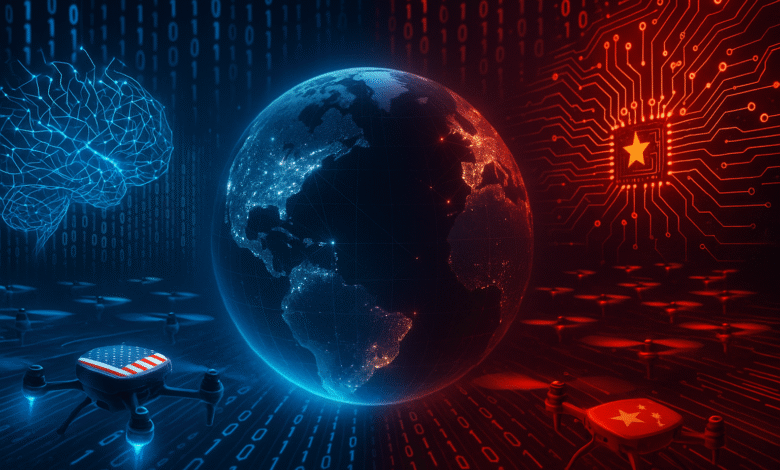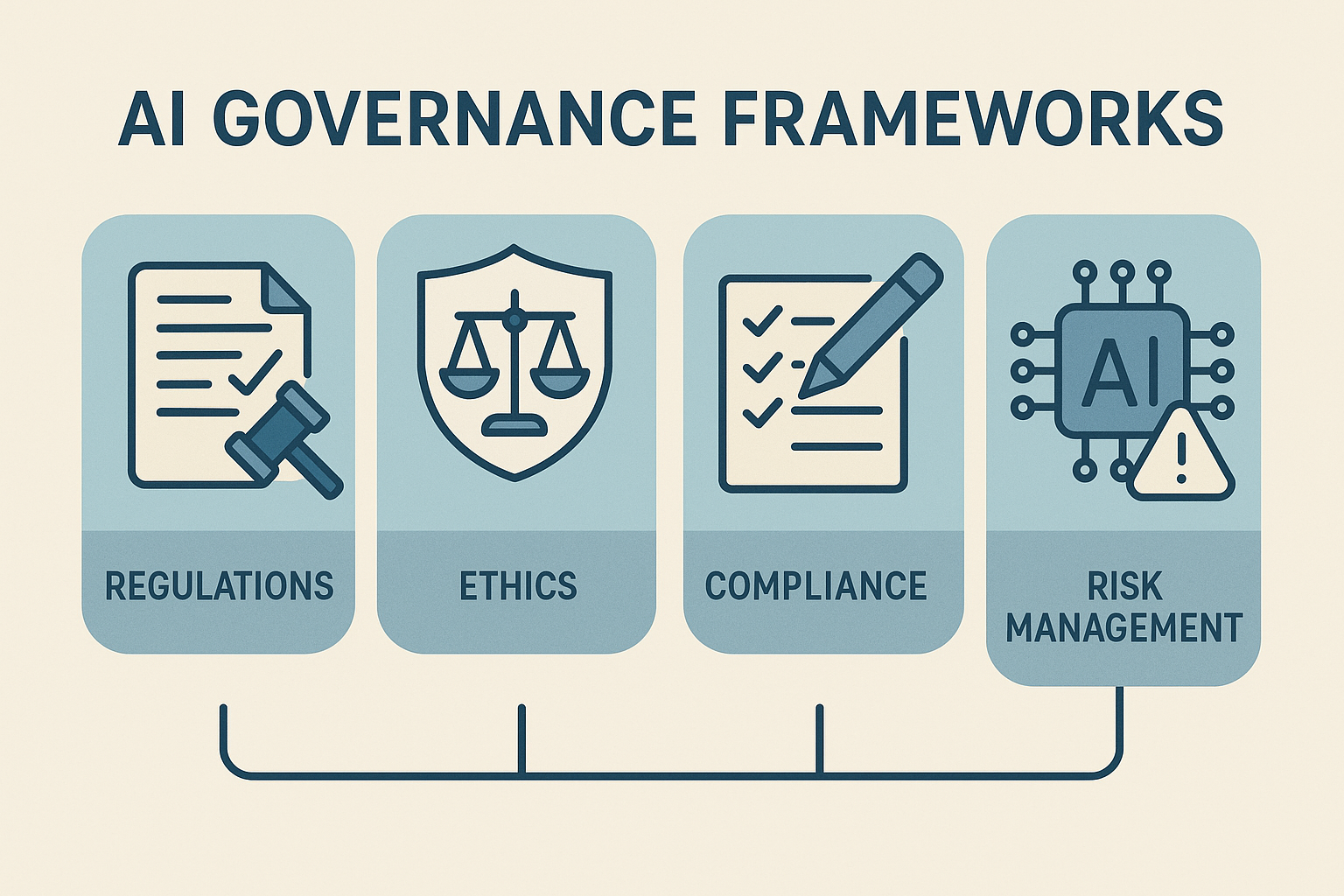The AI Arms Race Explained: What It Is and Why It Matters in 2026
Understand the AI arms race between the US and China in 2026. Learn about military AI, autonomous weapons, and why this global competition matters to you.

The world is in the middle of something big. Countries like the United States, China, Russia, and others are racing to build the best artificial intelligence. This competition is called the AI arms race, and it’s changing how countries think about military power, security, and who will lead the world in the future. The AI arms race isn’t just about computers and technology—it’s about who controls the future.
When people talk about this race, they mean countries competing to develop the smartest AI systems before anyone else. Why does this matter in 2026? Because the decisions countries make right now will decide who has power in the next 10, 20, and even 100 years. This article explains what the AI arms race is, why countries care so much about it, and what it could mean for all of us.
What Is the AI Arms Race?
Understanding the Basics
Think of an AI arms race like a competition between runners trying to finish first. In this case, the runners are countries, and instead of finishing a race, they’re trying to build the most advanced artificial intelligence technology. A military artificial intelligence arms race is when different countries compete to develop the best AI technology and powerful weapons systems that use AI.
The race started in the mid-2010s when people realized that artificial intelligence could change everything about how wars are fought. A military artificial intelligence arms race is an economic and military competition between two or more states to develop and deploy advanced AI technologies and lethal autonomous weapons systems (LAWS), with the goal of gaining a strategic or tactical advantage over rivals, similar to previous arms races involving nuclear or conventional military technologies. Some famous leaders have said important things about this race. For example, Russian President Vladimir Putin once said that whoever becomes the leader in AI will “rule the world.” That’s a big statement, but it shows how important countries think this competition is.
Why It’s Called an “Arms Race”
Countries have done similar competitions before. In the 1900s, Britain and other countries raced to build better ships. During the Cold War, the United States and the Soviet Union raced to build more nuclear weapons. Today, countries are racing to build better AI technology. The word “arms race” usually means countries are building more weapons to be stronger than other countries. With military AI, it’s a little different because AI isn’t exactly a weapon like a bomb or a tank. Instead, AI is like a tool that can help make weapons smarter and decisions faster. But the idea is the same: countries want to have the best AI so they can have an advantage.
The Main Players in the AI Competition
The United States
The United States is one of the biggest players in the AI arms race. American companies like OpenAI, Google, and Microsoft are building some of the world’s most advanced AI systems. The National Security Commission on AI recommended the U.S. boost federal AI R&D spending to $32 billion annually by 2026, showing the American government’s serious investment in staying ahead in military AI technology. The U.S. military is using AI for many things:
- Drone technology and autonomous weapons systems that can fly without a human controlling them
- AI systems that help commanders make faster decisions in battle
- Cyber defense systems powered by artificial intelligence that protect computer networks
- Predictive systems that guess where trouble might happen before it starts
China
China is the other major player in the US-China AI arms race. China’s government wants to be the world leader in AI by 2030. China’s pledge to be the world leader in AI by 2030 means we can expect Beijing to continue pouring resources into military AI R&D, from quantum-augmented AI to AI for space and cyber warfare. Chinese companies are working on:
- Autonomous weapons systems and drone swarms (many drones working together like a team)
- AI systems for gathering information and spying on other countries
- Cyber weapons that can attack computer networks
- AI tools that help commanders control soldiers and weapons in battles
China has lots of data—information about people, places, and things. This data helps them train AI systems. The Chinese government can make companies share this data, which gives China an advantage in building artificial intelligence systems.
Other Important Countries
Many other countries are also competing in the AI arms race. Russia is trying to build cheap but powerful AI weapons. Russia will try to leverage niche strengths perhaps in electronic warfare AI or cheaper autonomous systems to remain relevant in the arms race. Countries like:
- India is investing in military AI with its own Defense AI Project Agency
- The European Union is building “AI Factories” to compete with the US and China
- Turkey, Iran, and South Korea are developing their own drone technology
- Israel is creating AI systems for defense and security
How AI Is Changing the Military
Drone Swarms and Autonomous Weapons
One of the biggest changes in the military AI competition is drone technology. A drone is basically a flying robot that can be controlled from far away—or sometimes can control itself. By 2026, each of the U.S. Army’s 10 active combat divisions will be equipped with roughly 1,000 drones, dramatically shifting the battlefield from crewed helicopters to autonomous systems. Instead of sending one drone, countries are now building drone swarms—many drones working together like birds flying in a group.
Autonomous weapons systems are weapons that can make decisions without a human telling them what to do. This is a really big and scary part of the AI arms race. These weapons are sometimes called “killer robots” or “slaughterbots.” Lethal autonomous weapons systems use artificial intelligence to identify and kill human targets without human intervention, and have colloquially been called “slaughterbots” or “killer robots”.
AI for Command and Control
Imagine a general in the middle of a battle. There’s so much information coming in—where enemies are, what the weather is doing, how many soldiers are hurt. A human brain can’t process all this information quickly. This is where military AI helps. AI systems can:
- Look at thousands of pieces of information at once
- Figure out what’s important and what’s not important
- Suggest the best decisions for a general to make
- Help units communicate and work together better
- Predict where an attack might come from
Cybersecurity and Cyber Warfare
A big part of the modern military AI competition is about computers and internet attacks. The U.S. military’s Joint Artificial Intelligence Center has worked on AI tools to fortify cybersecurity of defense networks, while on offense, AI can be used to find and exploit vulnerabilities faster. Countries use artificial intelligence to:
- Protect their own computer systems from attacks
- Find weaknesses in other countries’ computer systems
- Create smarter viruses and attacks
- Defend against cyber weapons
The Race to Artificial General Intelligence
What Is AGI?
As the AI arms race continues, countries are also racing to build something called artificial general intelligence or AGI. Right now, AI systems are smart at one specific job. For example, a computer might be great at recognizing faces but not great at writing stories. Artificial general intelligence would be smart at lots of different jobs, like a human brain.
Why does this matter for the AI arms race? Because many experts think that whoever builds AGI first will have an amazing advantage. Several influential figures and publications have emphasized that whoever develops artificial general intelligence (AGI) first could dominate global affairs in the 21st century. Some people are worried that if one country builds AGI before others, they could control the world.
The 2026 Timeline
By 2026, experts expect the AI arms race to speed up even more. Countries are setting goals and spending lots of money to get ahead. The military AI market is growing fast. The global artificial intelligence in military market size was estimated at USD 9.31 billion in 2024 and is projected to reach USD 19.29 billion by 2030, growing at a CAGR of 13.0% from 2025 to 2030.
Why This Matters for Society
Safety and Control Issues
One big worry about the AI arms race is safety. When countries rush to build the best military AI, they might not spend enough time making sure the AI is safe and won’t do bad things by accident. Only around 80 to 120 researchers in the world are working full-time on AI alignment—making sure AI follows human values—while thousands of engineers are working on expanding capabilities as the AI arms race heats up. This is scary because:
- An AI system might make a mistake and hurt innocent people
- AI weapons could spread to bad groups or terrorists
- AI might be used to spy on or control regular people
- A computer system could stop working and cause problems
Economic Competition
The AI arms race is also about money and business. Companies and countries that develop the best artificial intelligence will make lots of money and have more power. Big tech companies in America and China are competing hard. Microsoft is investing $10 billion in OpenAI, creator of ChatGPT and Dall-E, and announced plans to integrate generative AI into its Office software and search engine, Bing, as Google declared a “code red” corporate emergency in response to the success of ChatGPT. This means the technology race affects jobs, prices, and what products you use.
Global Stability and Peace
When countries race against each other like this, it can make the world less stable. Countries might feel scared that another country is getting too powerful. This fear can lead to:
- Countries making rushed decisions
- Mistakes that could start wars
- Less trust between countries
- Countries hiding information from each other
- Weapons spreading to places they shouldn’t go
Ethical Questions
There are big questions about what’s right and wrong with military AI. Should countries build autonomous weapons systems that can kill without a human making the decision? Who is responsible if an AI weapon makes a mistake? How do we make sure military AI is used fairly and not to hurt innocent people?
The Speed of the Race
Why Countries Feel Rushed
The AI arms race is moving really fast. A race starts today,” Microsoft CEO Satya Nadella said, “We’re going to move, and move fast.” This speed is important because:
- Technology changes quickly, and what’s best today might be old tomorrow
- Countries are scared of falling behind
- Success comes to whoever gets there first
- Investors want to make money quickly
The Problem with Moving Too Fast
Here’s a problem: when people rush, they make mistakes. If a country is racing to build the best autonomous weapons systems, they might not test them enough. They might not think about all the ways things could go wrong. This can lead to:
- Unsafe technology being used in real situations
- Weapons that don’t work the way they’re supposed to
- Accidental wars starting because of mistakes
- Bad guys getting access to powerful military AI
How the AI Arms Race Could End
Possible Futures in 2026 and Beyond
There are different ways the AI arms race could play out:
Scenario 1: Continued Competition — Countries keep racing to build better artificial intelligence. Some countries get ahead, others fall behind. The gap between powerful countries and weaker countries gets bigger.
Scenario 2: Cooperation — Countries decide to work together instead of compete. The real existential threat ahead is not from China, but from the weaponization of advanced AI by bad actors and rogue groups who seek to create broad harms, gain wealth, or destabilize society, making it incumbent on the US and China as global leaders in developing AI technology to jointly identify and mitigate such threats. They make rules about what kind of military AI is okay and what isn’t.
Scenario 3: Accident or Crisis — A mistake with autonomous weapons systems causes a big problem. This scares everyone so much that they decide to slow down and make rules.
Scenario 4: One Country Wins — One country (probably the US or China) builds much better artificial general intelligence than everyone else. This changes everything about power in the world.
What Experts Think Should Happen
Many experts think countries should work together. The notion of an AI governance arms race reflects real competition among states, international organizations, and the tech industry to set global standards and dominate governance frameworks in line with national and corporate interests, with some arguing that the global community must move from symbolic gestures to enforceable commitments to develop a coherent and effective AI governance framework. Some ideas for this include:
- Creating international rules about lethal autonomous weapons systems
- Sharing information about AI technology to build trust
- Making sure military AI systems are tested and safe
- Teaching people around the world about AI risks
- Making sure poor countries aren’t left behind in the technology race
Looking Forward to 2026 and Beyond
What’s Already Happening
The AI arms race isn’t something that might happen in the future—it’s happening right now. Countries are spending billions of dollars on military AI research. Companies are being recruited to help their governments build autonomous weapons systems. Students in colleges around the world are being trained to work on artificial intelligence for defense.
What Could Happen in 2026
By 2026, we might see:
- More drone swarms being tested by militaries
- Faster AI-assisted command systems that help generals make decisions
- Better cyber defense systems that stop hackers automatically
- First real uses of autonomous weapons systems in conflicts
- New international agreements (or fights) about military AI rules
- Companies making more money from military AI than ever before
- More countries joining the AI arms race
Important Links for Learning More
If you want to learn more about the AI arms race and military technology, check out these resources:
- AI Now Institute: Tracking the US and China AI Arms Race — This article has detailed information about how the US and China are competing in military AI and what experts think about it.
- RAND Corporation: Strategic Competition in the Age of AI — This research organization has written important reports about how artificial intelligence is changing military strategy and what countries should do about it.
Conclusion
The AI arms race is one of the most important competitions happening in the world right now. Countries like the United States and China are racing to build the best military AI and autonomous weapons systems because they think it will help them win wars and control the future. By 2026, this race will move even faster, with bigger spending, more companies getting involved, and more powerful technology being developed.
The problem is that when countries rush to win a race, they sometimes don’t think enough about safety and what could go wrong. Lethal autonomous weapons systems and artificial general intelligence could change everything about how wars are fought and who has power in the world. Some experts think countries should work together to make rules about military AI, while others think countries will just keep competing.
What happens in the next few years will probably decide what the world looks like for the rest of this century. Whether it’s cooperation or continued competition, the AI arms race matters to everyone—from soldiers in the military to regular people living their daily lives—because the decisions made now will shape our future in ways we’re only beginning to understand.











